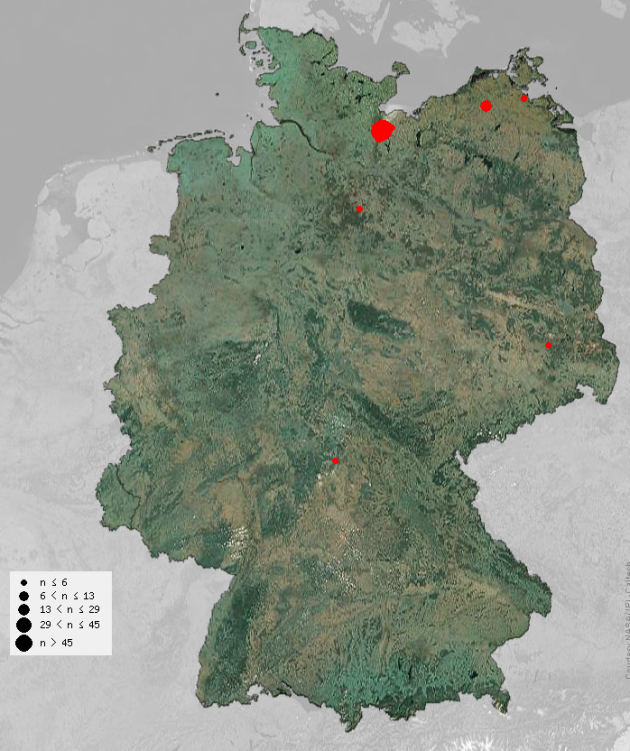> The area where these feral rheas live …
Try saying “feral rheas” five times quickly without stopping.
On a more serious note, do you have any other examples of surprising feral animal species?
There used to be a big book in one of the university libraries on the topic of “feral birds of the world” giving maps of each distribution. For example, Peregrines are feral on the Indian Ocean islands. I don’t remember seeing rheas, though.
From the web.
Greater Rheas, a species the Germans call Nandu, are very popular in Germany and frequently kept in zoos as well as private enclosures. It is not unusual to drive by a farm building and see a bunch of Greater Rheas on the farm’s fenced-in pasture next to sheep or goats. Therefore, some will occasionally escape and roam the land until they are – inevitably, as they are large and cannot hide very well in the open landscapes they frequent – caught again by their owner. The following map shows all observations of Greater Rheas throughout Germany since 1999. You can see mostly small dots, indicating single individuals over a short period of time.
